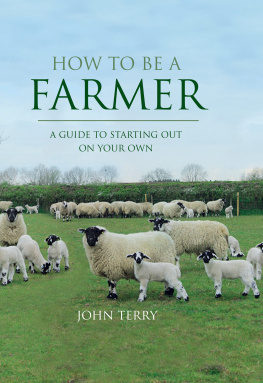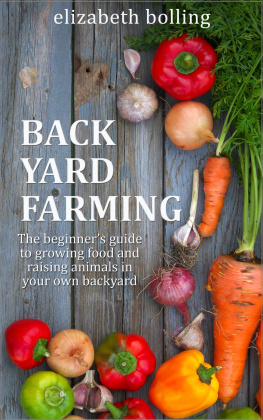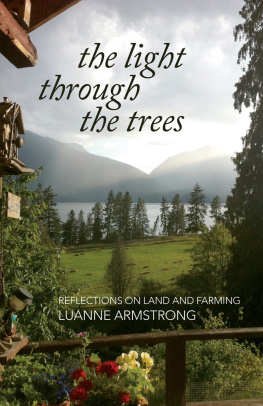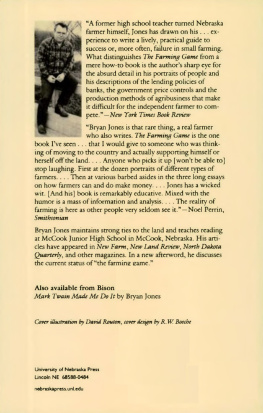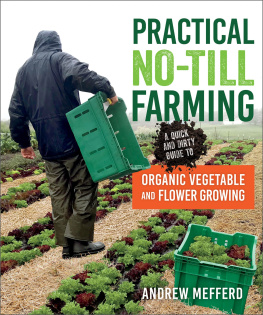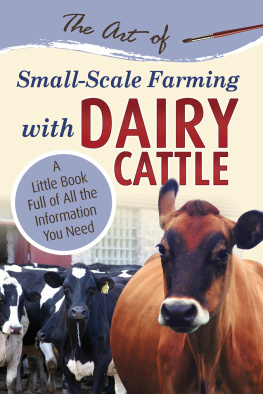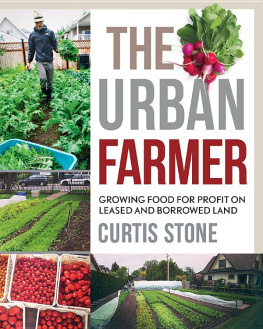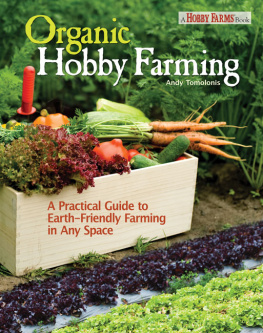Contents
Guide
HOW TO BE A
FARMER
A GUIDE TO STARTING OUT ON YOUR OWN
John Terry
Hon. B.A., Cert.Ed., C.Biol., M.R.S.B., M.C.I.Hort., F.R.Ag.S., F.R.S.A.

By the same author:
Pigs in the Playground
Calves in the Classroom
Ducks in Detention
Rabbits on Report
How To Become a First-Generation Farmer
The Farming Joke Book
How to Be a Farmer
This book was previously published in hardback with the title How to Become a First-Generation Farmer
Old Pond Publishing is an imprint of Fox Chapel Publishers International Ltd.
Copyright 2015, 2021 by John Terry and Fox Chapel International Ltd.
All right reserved. No part of this book may be reproduced, stored in a retrieval system, or transmitted in any form or by any means, electronic, mechanical, photocopying, recording, or otherwise, without the prior written permission of Fox Chapel Publishers, except for the inclusion of brief quotations in an acknowledged review.
ISBN 978-1-912158-5-22
A catalogue record for this book is available from the British Library.

Fox Chapel Publishing
903 Square Street
Mount Joy, PA 17552
Fox Chapel Publishers International Ltd.
3 The Bridle Way, Selsey, Chichester PO20 0RS.
www.oldpond.com
Printed and bound in the UK
10 9 8 7 6 5 4 3 2 1
Cover photo: Pedigree sheep at Oak Tree Farm John Terry
For my lovely wife, Sarah, and our two wonderful children, Jonathan and Roseanna not forgetting my dear mother and father, and also my Uncle Ben and Aunty Doll.
ACKNOWLEDGEMENTS
I would like to thank all the farmers for allowing me on to their farms and thus helping me to compile this book. I would like to thank them for giving me their permission to take and include photographs.
I would also like to thank our veterinary surgeons: Steve and Thaddeus at Midshire Farm & Equine, and arable specialist John at Frontier Agriculture.
My wife, Sarah, has been wonderful reading through the manuscript and taking on the enormous task of typing it up on to the computer.
DISCLAIMER
Although the author and publisher have made every effort to ensure that the information in this book is correct at the time of going to press, we do not assume, and hereby disclaim, any liability to any party for any loss, damage, or disruption caused by errors or omissions, whether such errors or omissions result from negligence, accident, or any other cause. Whilst knowledgeable about agriculture, the author is not a practicing veterinarian so if you notice an error or inaccuracy please contact the publisher so this can be amended in the next edition.
ABOUT THE AUTHOR
John Terry was brought up by his parents on a private housing estate in Nuneaton, Warwickshire. At weekends and during school holidays he stayed with his uncle and aunt on a 500-acre farm in Leicestershire. His uncle was a farm manager and John, from a very early age, enjoyed all aspects of farm and country life. John left school at 18 and went to work on another farm before attending a 3-year college course at Worcester to become a Rural Studies teacher. He went back to the school he attended as a pupil to teach Rural Studies and remained there for the whole of his teaching career, which was 25 years. He was head of department and taught agriculture, horticulture and environmental studies, setting up a thriving school farm. At the same time, he wrote four hilarious books about life on the school farm. In 1989 he purchased a field that had not been farmed for a number of years, with no electricity, no farm buildings and a very poor water supply. The field was soon cultivated, grassed and a poultry unit installed for free-range laying hens. Over the years, the poultry enterprise increased. In addition, both pedigree Kerry Hill and Derbyshire Gritstone sheep have been bred and shown, winning numerous championships.
Johns enthusiasm, determination, intelligence, humour and excellent communication skills have been apparent in all his endeavours, as he has proven himself to be a good farmer, establishing a farm of which he can be proud. John is good at getting what he wants he gained planning permission for a mobile home on his site, which he lived in before he got planning permission for a permanent bungalow. Over the years, his farm land has increased to 13.92 ha (34.5 acres), and now includes a field to grow arable crops. He has always had an integrated life, formerly close to his parents and now close to his wife, Sarah, and his children, Jonathan and Roseanna. His family are involved in everything he does.
CONTENTS
INTRODUCTION

A 3.164 hectare field on the Leicestershire Warwickshire border, up for auction on 26 June 1989.
This is the story of how I developed a farm from a 3.164 hectare (7.82 acre) field that had not been farmed for a number of years, turning it into a thriving business and lovely home for myself and then my family over 32 years. Whilst telling the story, I have also explained how to set up and look after other agricultural enterprises. This is a modern agricultural textbook that is intended to be informative but at the same time highly amusing which is what you would expect from me especially if you have read my other books. Hopefully it will set you on the road to becoming a successful first-generation farmer like me.
I was lucky enough to purchase the field for 21,000 which was originally part of Vale Farm. It had not been farmed for a number of years and was covered in weeds. There were no buildings on the land and no electricity supply. A water supply was connected to a neighbouring farm. It reached the field in old lead pipes with very little pressure and was really unfit for human consumption.
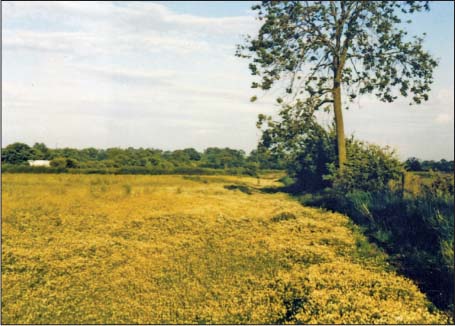
Looking through the gate to the first field.
The land is fertile in nature. It is a good, level field, regular in shape with well-defined boundaries and benefits from two road frontages. I bought the field with savings and therefore didnt need a bank loan or mortgage.
Neither my parents nor my grandparents were farmers, so I was not born into a farming family. My uncle, Ben, was a farm manager on a country estate, so I spent many happy holidays and weekends helping him on the farm. The lady who owned the estate, Mrs Mary Caroline Inge, lived in a large mansion house. My uncle not only looked after the farm but also tended the gardens, grew orchids for her and chauffeured her Rolls Royce and Lanchester. Later, Mrs Inge died, and my uncle managed for Lord and Lady de Clifford, who inherited the farm and bought three neighbouring farms.
I was born in April 1952 and spent my childhood with my parents, growing up on a private housing estate in Nuneaton. By the time I was 15, I had kept rabbits, guinea pigs, bantams, tortoises, mice, hamsters, newts, frogs and, best of all, my dog Lassie. I showed my rabbits and guinea pigs, which I enjoyed doing. Next came cage birds, which I exhibited at shows throughout the Midlands and with which I achieved two first prizes at the National Exhibition of Cage Birds held at Alexandra Palace in London. But I was not a farmer I kept these animals as substitutes for farm animals there was no room for cattle, sheep or pigs on a suburban housing estate.

